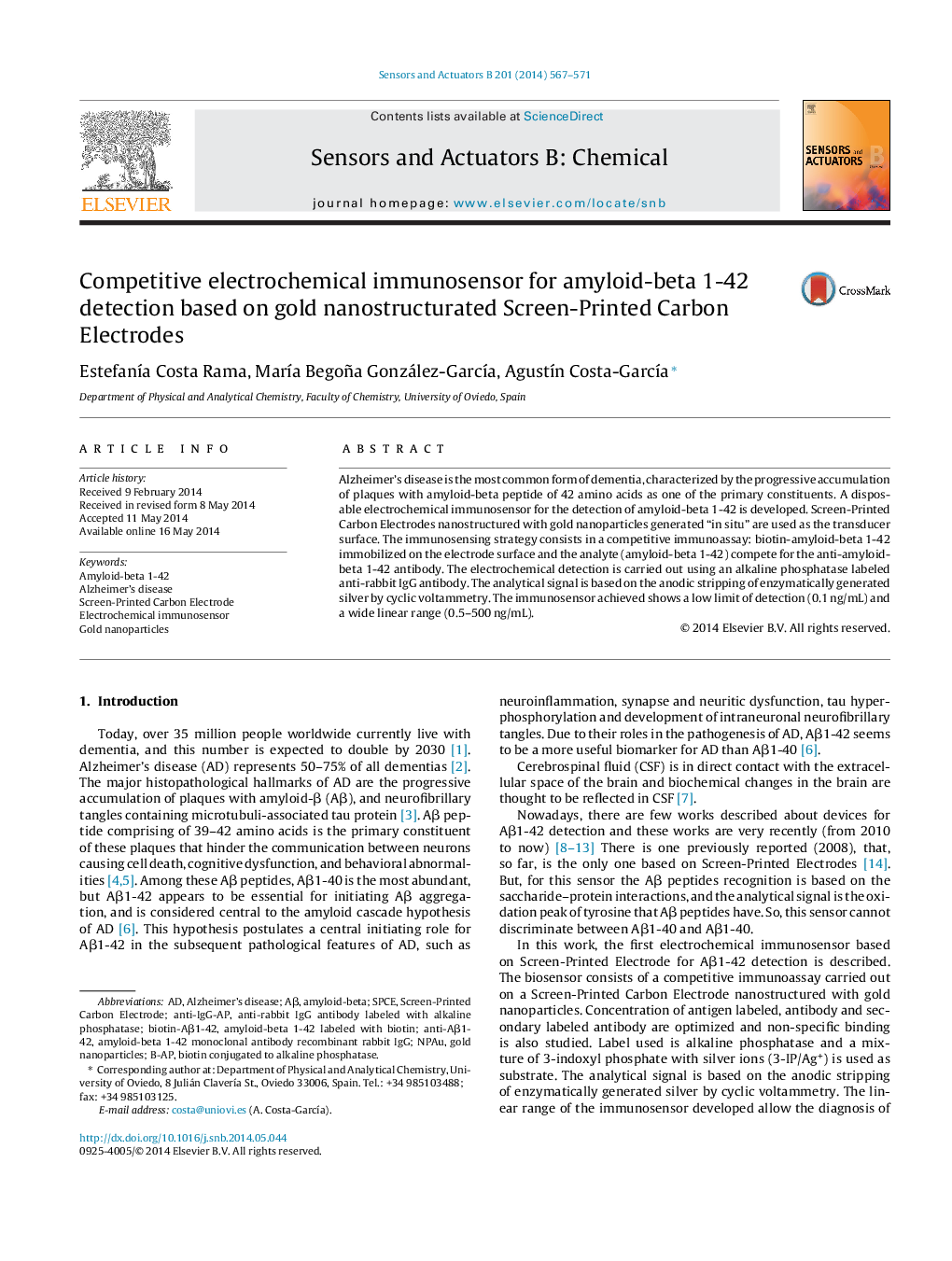| Article ID | Journal | Published Year | Pages | File Type |
|---|---|---|---|---|
| 7146932 | Sensors and Actuators B: Chemical | 2014 | 5 Pages |
Abstract
Alzheimer's disease is the most common form of dementia, characterized by the progressive accumulation of plaques with amyloid-beta peptide of 42 amino acids as one of the primary constituents. A disposable electrochemical immunosensor for the detection of amyloid-beta 1-42 is developed. Screen-Printed Carbon Electrodes nanostructured with gold nanoparticles generated “in situ” are used as the transducer surface. The immunosensing strategy consists in a competitive immunoassay: biotin-amyloid-beta 1-42 immobilized on the electrode surface and the analyte (amyloid-beta 1-42) compete for the anti-amyloid-beta 1-42 antibody. The electrochemical detection is carried out using an alkaline phosphatase labeled anti-rabbit IgG antibody. The analytical signal is based on the anodic stripping of enzymatically generated silver by cyclic voltammetry. The immunosensor achieved shows a low limit of detection (0.1Â ng/mL) and a wide linear range (0.5-500Â ng/mL).
Keywords
Related Topics
Physical Sciences and Engineering
Chemistry
Analytical Chemistry
Authors
EstefanÃa Costa Rama, MarÃa Begoña González-GarcÃa, AgustÃn Costa-GarcÃa,
